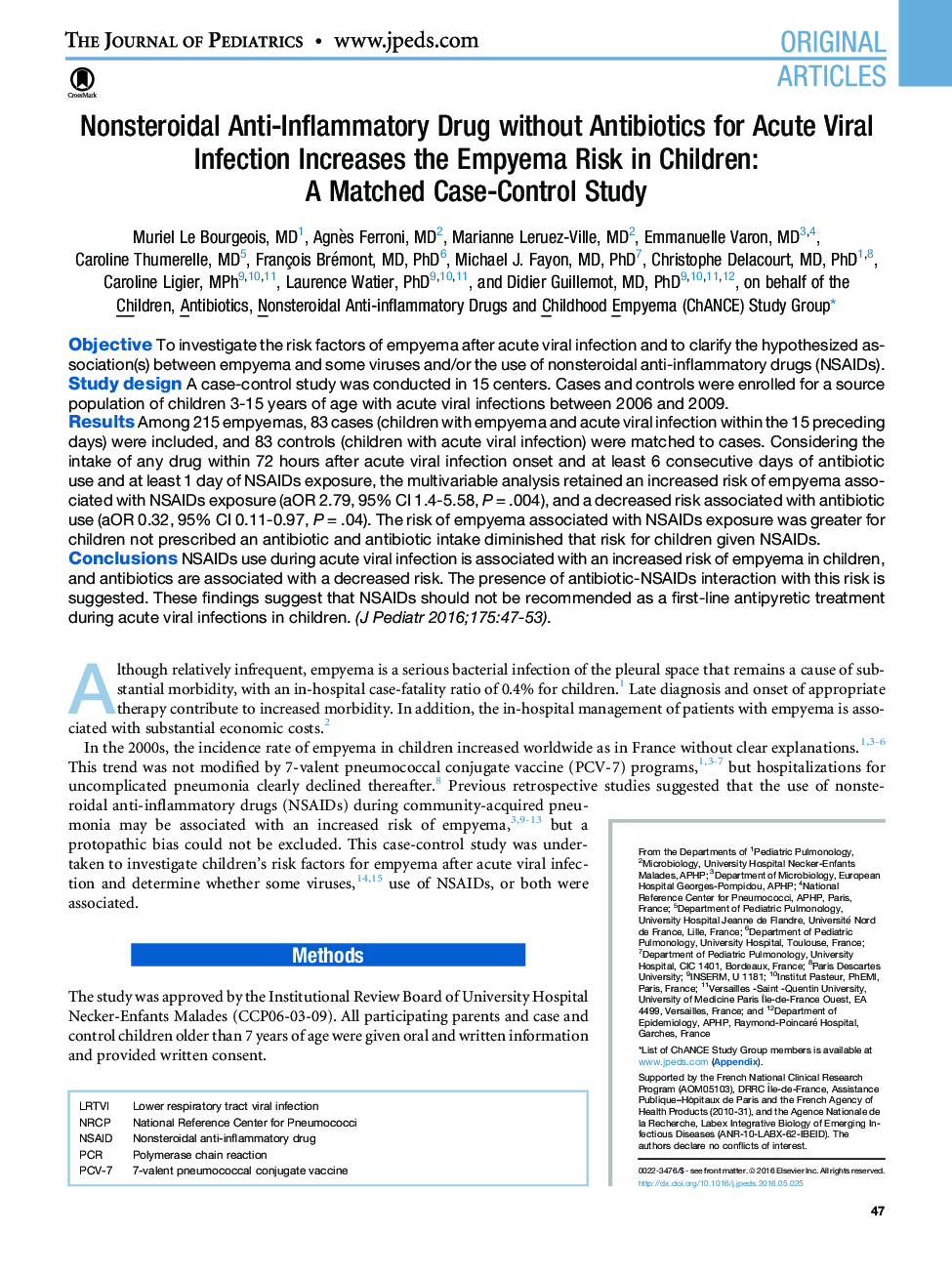| Article ID | Journal | Published Year | Pages | File Type |
|---|---|---|---|---|
| 6219292 | The Journal of Pediatrics | 2016 | 10 Pages |
ObjectiveTo investigate the risk factors of empyema after acute viral infection and to clarify the hypothesized association(s) between empyema and some viruses and/or the use of nonsteroidal anti-inflammatory drugs (NSAIDs).Study designA case-control study was conducted in 15 centers. Cases and controls were enrolled for a source population of children 3-15 years of age with acute viral infections between 2006 and 2009.ResultsAmong 215 empyemas, 83 cases (children with empyema and acute viral infection within the 15 preceding days) were included, and 83 controls (children with acute viral infection) were matched to cases. Considering the intake of any drug within 72 hours after acute viral infection onset and at least 6 consecutive days of antibiotic use and at least 1 day of NSAIDs exposure, the multivariable analysis retained an increased risk of empyema associated with NSAIDs exposure (aOR 2.79, 95% CI 1.4-5.58, P = .004), and a decreased risk associated with antibiotic use (aOR 0.32, 95% CI 0.11-0.97, P = .04). The risk of empyema associated with NSAIDs exposure was greater for children not prescribed an antibiotic and antibiotic intake diminished that risk for children given NSAIDs.ConclusionsNSAIDs use during acute viral infection is associated with an increased risk of empyema in children, and antibiotics are associated with a decreased risk. The presence of antibiotic-NSAIDs interaction with this risk is suggested. These findings suggest that NSAIDs should not be recommended as a first-line antipyretic treatment during acute viral infections in children.
